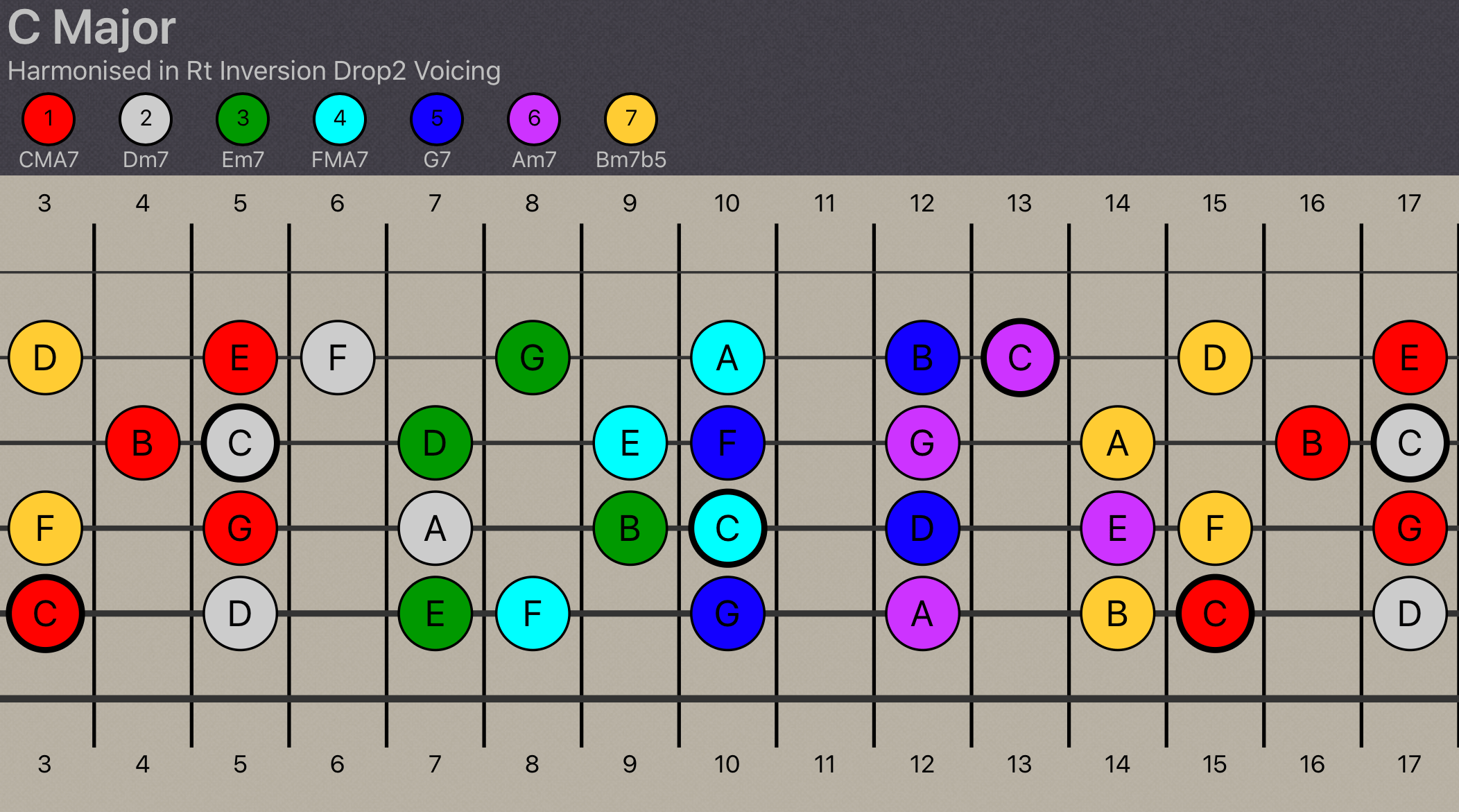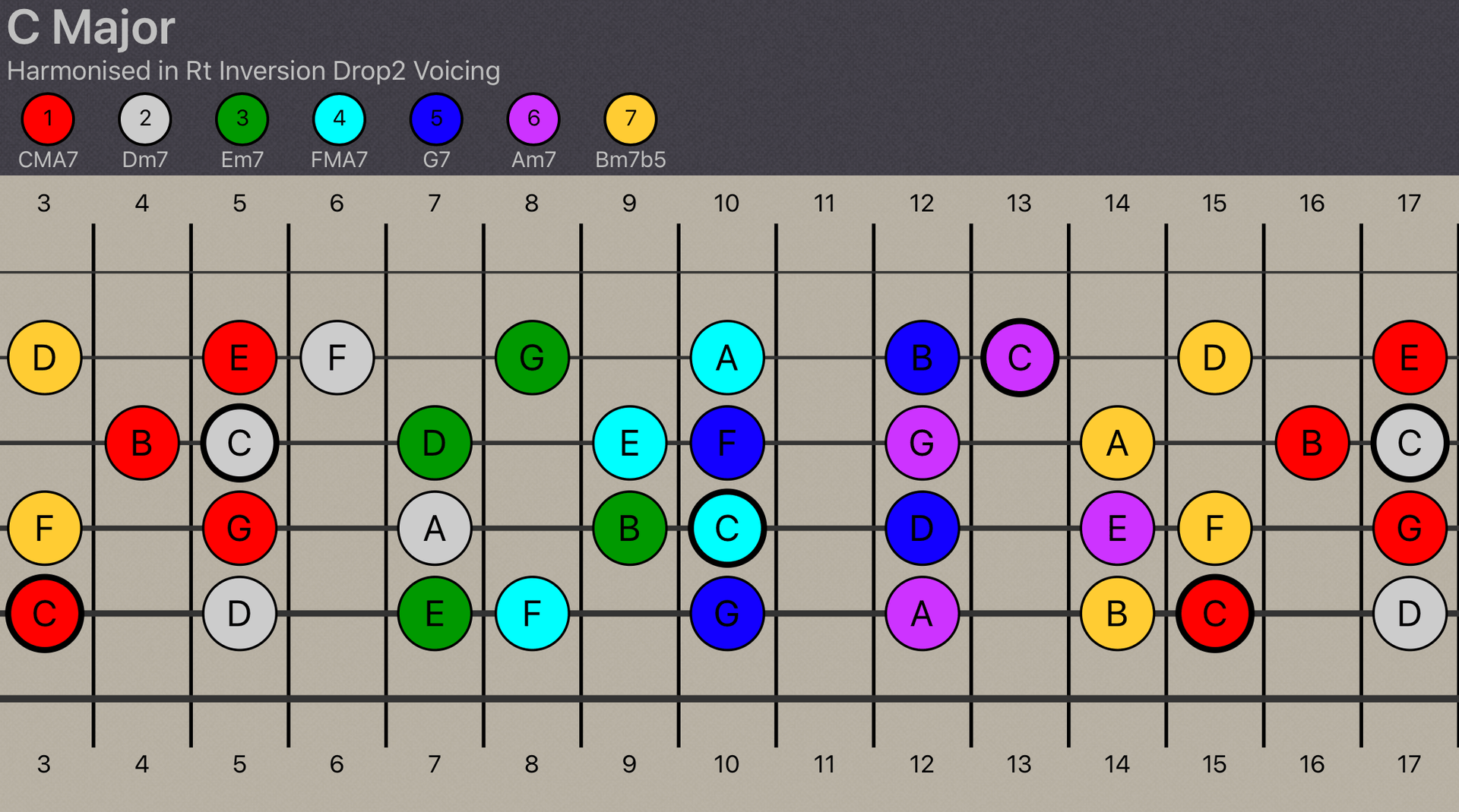Today’s post introduces creating practice routines and exercises using seven-note diatonic scales as a framework. Unlike practice routines using only three or four individual notes, seven-note diatonic scales can be derived into many different types of chords and allow for a huge variation of options. However, While it may seem complicated, there are underlying patterns that learners can use to their advantage. Colour-coded fretboard diagrams provide a simple visual reference to various theoretical topics that are tricky to implement physically.
Youtube Playlist Focussing On Practice Exercises Using Seven-Note Diatonic Scales
A crucial aspect of practice routines using seven-note diatonic scales is that they allow for an expansive approach to survey fretboard opportunities and develop a creative understanding of harmony.
I’ve created a YouTube playlist that explores and demonstrates creating practice routines and exercises using seven-note diatonic scales
Each item in the list below links to one of the videos in the playlist.
- Harmonising Scales Into Three Note Chords
- Harmonising Scales From A Different Inversion
- Harmonising Scales From Open Voicing
- Moving Between Strings When Harmonising Scales
- Combining Picking Techniques With Harmonised Scales
Why focus on seven-note diatonic scales.
Because diatonic harmony is a fundamental structure within most music. It can be heard in everything from today’s popular music to centuries-old classical music and evidence exists even further back in ancient civilisations. Diatonicism is a core foundation of how sheet music is written and is a significant reason for the innovation of equal-temperament, the 12-tone tuning system that most modern instruments utilise, guitars and pianos included.
Key Centres
The basic instinct of diatonicism is to perceive a home chord or root/tonic of the harmonic composition. The most obvious example in popular music is progressions that utilize the I – IV – V chords. With more complicated progressions, this logic can become more challenging for the ear and brain to perceive immediately.
Nashville System & Roman Numeral Analysis
The Nashville Numbering System and Roman numeral analysis make use of the related chords of a diatonic scale.
https://en.wikipedia.org/wiki/Nashville_Number_System
https://en.wikipedia.org/wiki/Roman_numeral_analysis
On sheet music the stave itself represents a diatonic key-centre and this is implied at the beginning of a bar via a collection of sharp [#] and flat [b] symbols.
The Challenges And Difficulties Of Harmonised Scales.
There are many frustrating aspects of learning and playing harmonised scales on the guitar. Physically, they’re technically challenging to implement. Additionally people may also find the concept creatively limiting, simply moving up and down a predefined pathway doesn’t lead to quick innovation or invention.

Developing practice routines with harmonised seven-note diatonic scales.
Understanding the constraints and limitations of harmonising scales helps to guide practice. Consequently, it’s important when creating exercises that we provide variations to help to keep things interesting and develop other areas of ability, such as rhythm, picking techniques or even developing relative-pitch. Furthermore, once a concept is committed to memory it becomes easier to utilise in more creative and ambitious ideas.
Diatonic Cycles
One of the more complicated exercises created from harmonising scales is often known as a diatonic cycle. Diatonic cycles are interesting as they move through each chord via voice-leading, moving to the nearest notes of the next chord. A diatonic cycle is almost algorithmic in nature, but a powerful consequence is that they can create exercises that move through each inversion of each chord throughout the harmonised diatonic scale. A concept for future discussion!
